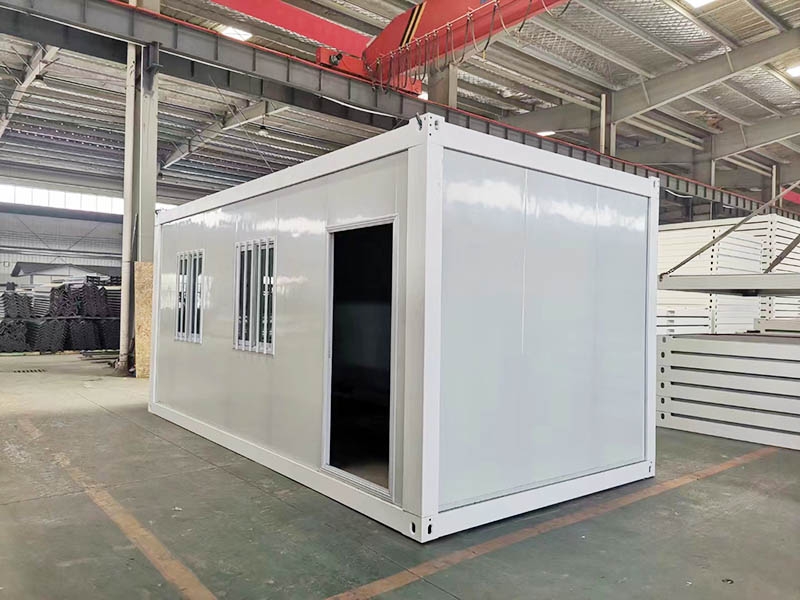Currently, the two dominant players in the mobile housing market are mobile housing and container mobile housing. Which of these two commodities is better or worse, and both sides are not conspiring against each other. The two commodities are now analyzed from the following aspects.
Design: The design of the container activity room introduces modern household elements, with a single box as a unit, and is randomly combined and stacked. Its sealing, sound insulation, fire prevention, moisture prevention, and heat insulation functions are better; The design of prefabricated houses is based on raw materials such as steel and plates for on-site installation. The sealing, sound insulation, fire prevention, moisture prevention, and heat insulation functions are poor, and the effect will not be known until the installation is completed, which is not conducive to comparison and selection.
In terms of layout: The container mobile house is a full layout, welded and fixed, which is more consolidated, more wind resistant, and more earthquake resistant. It will not fall apart or collapse in the event of hurricanes, earthquakes, ground subsidence, and other disasters; The prefabricated house is inlaid in layout, with low resistance. In case of unstable foundation, hurricane, earthquake, etc., it will simply collapse and fall apart.
Decoration: The floor of the container activity room is paved with ceramic tiles, and one-time decoration such as walls, ceilings, water and electricity, doors and windows, and exhaust fans is used for a long time, which is energy-saving, environmentally friendly, and beautiful; However, equipment such as walls, ceilings, water pipes, circuits, lighting, doors and windows of prefabricated houses need to be installed on site, resulting in long construction periods, large losses, and not yet beautiful.
Installation: The container mobile room can be lifted in full containers without the need for concrete foundation. It can be installed in 15 minutes, checked in for 1 hour, and used after connecting to the power supply; The installation of prefabricated houses requires concrete foundations, building the main body, installing walls, hanging ceilings, and installing water and electricity, which takes a long time.
Application: The design of the container mobile room is becoming more humanized, and the living and work are becoming more comfortable. The number of rooms can be added or reduced at any time, making it convenient and optional; However, prefabricated houses have poor sound insulation and fire protection functions, and generally have comfortable living and working conditions. After installation, they are fixed and shaped, and the number of rooms cannot be temporarily increased or decreased.
In terms of moving: The container mobile house does not need to be disassembled for moving, and the items in the room can be moved with the box without loss. It can be lifted and moved more than 100 times, which is convenient and saves money; However, moving prefabricated houses requires discrete reinstallation, and the items still need to be picked up steadily. Moreover, each disassembly and assembly process requires a large amount of data loss, high cost, and time and labor consumption. After four or five times of disassembly and assembly, they are basically scrapped.
After comparison in various aspects, container mobile housing has great advantages, but the current market recognition of mobile housing is high, and the implementation and application of container mobile housing still needs to be done.
